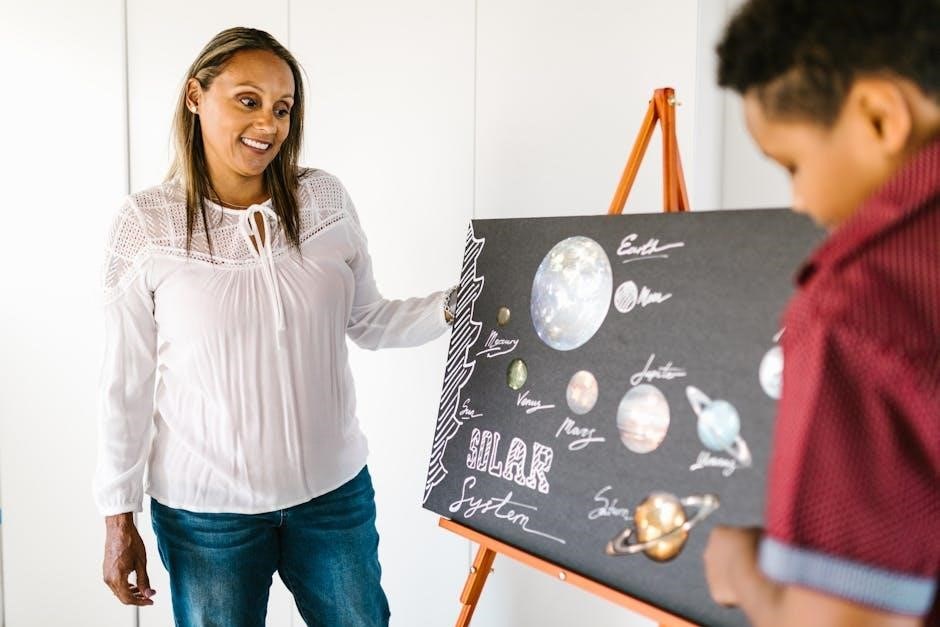Medellin’s adult entertainment scene offers a vibrant nightlife with diverse options, blending sensuality and excitement. From luxury strip clubs to intimate massage services, the city caters to all preferences, ensuring unforgettable experiences.
Overview of Medellin’s Vibrant Nightlife
Medellin’s nightlife is a fusion of energy, music, and sensuality, offering something for every preference. The city’s entertainment districts, such as El Poblado and Parque Lleras, are hubs for vibrant bars, clubs, and adult venues. From high-end lounges to casual watering holes, the scene is diverse and dynamic. Reggaeton rhythms dominate many clubs, creating an infectious party atmosphere. Visitors can enjoy live music, dazzling performances, and late-night parties. The city’s nightlife is known for its safety and welcoming vibe, attracting both locals and tourists. Whether seeking luxury or casual fun, Medellin’s nightlife delivers unforgettable experiences, blending Colombian culture with modern entertainment.
Why Medellin is a Hub for Adult Entertainment
Medellin has emerged as a prominent destination for adult entertainment due to its vibrant nightlife, diverse venues, and welcoming atmosphere. The city’s transformation from a troubled past to a thriving cultural hub has attracting visitors seeking excitement and leisure. Its strategic location in Colombia, combined with a progressive attitude toward adult entertainment, makes it a hotspot for both locals and tourists. The variety of adult venues, including strip clubs, brothels, and massage services, caters to all preferences and budgets. Additionally, Medellin’s focus on safety and modern amenities enhances its appeal, making it a central hub for adult entertainment in South America.

Best Strip Clubs in Medellin
Medellin’s best strip clubs offer luxurious settings, stunning performances, and vibrant atmospheres. Luna Lunera, Fase Dos, and La Isla stand out for their unique experiences and exceptional entertainment.
Luna Lunera Night Club: A Premier Destination for Adult Entertainment
Luna Lunera Night Club is a top destination for adult entertainment in Medellin, offering a captivating blend of eroticism and sensuality. Known for its 24-hour service, the club features stunning dancers who deliver mesmerizing performances. The atmosphere is sophisticated, with live music and an electric vibe that keeps the energy high. Visitors praise the club for its luxurious setting and exceptional service, making it a must-visit for those seeking unforgettable experiences. Whether you’re looking to relax or party, Luna Lunera provides an unparalleled adult entertainment experience in the heart of Medellin.
Fase Dos: A Unique Experience in Medellin’s Nightlife
Fase Dos Night Club offers a one-of-a-kind experience in Medellin, blending tropical aesthetics with lively nightlife. Located on Carrera 44, this club is known for its unique ambiance, resembling the Rainforest Cafe. Visitors are drawn to its themed parties, live DJs, and vibrant atmosphere. The club’s decor, combined with its modern approach to adult entertainment, makes it a standout destination. Fase Dos is popular among both locals and tourists, providing a space for those seeking excitement and memorable nights. Its unique blend of style and energy ensures an unforgettable experience, making it a must-visit for anyone exploring Medellin’s dynamic nightlife scene.
La Isla: The Best Strip Club in Medellin
La Isla stands out as Medellin’s premier strip club, renowned for its expansive stage, spacious layout, and diverse lineup of performers. This club is a favorite among locals and visitors alike, offering a sophisticated and electrifying atmosphere. With its large stage and ample seating, La Isla provides an immersive experience, showcasing talented dancers and high-energy performances. The club’s popularity stems from its ability to cater to a wide range of preferences, ensuring an unforgettable night for all. Its reputation as the best strip club in Medellin is well-deserved, making it a must-visit destination for those seeking luxury and excitement in the city’s vibrant nightlife scene.
Black Dog: Reggaeton and Party Atmosphere
Black Dog is a vibrant hotspot in Medellin, known for its infectious reggaeton beats and lively party atmosphere. Located in the heart of the city, it attracts those who love to dance and enjoy a dynamic nightlife. The club features a modern decor with a welcoming ambiance, making it a popular choice for both locals and tourists. Its playlist, dominated by reggaeton and Latin rhythms, ensures non-stop energy on the dance floor. With its strategic location in El Poblado, Black Dog is an excellent spot to start or end your night, offering a perfect blend of music, drinks, and excitement that defines Medellin’s thriving adult entertainment scene.

Adult Massage Services in Medellin
Medellin offers a variety of adult massage services, blending luxury and relaxation. These services cater to diverse preferences, providing a sophisticated and intimate experience for visitors.
Oriental SPA: Luxury and Sensuality
Oriental SPA stands out as a premier destination for adult entertainment in Medellin, offering a blend of luxury and sensuality. The spa provides an exquisite range of services, including erotic massages and private sessions, designed to cater to the desires of singles, couples, and groups. With 4/5-star accommodations, every detail is tailored to ensure a memorable experience. The all-inclusive packages start at just $550 per night, making it an accessible yet upscale option for those seeking relaxation and indulgence. The ambiance is sophisticated, with a focus on discretion and comfort, ensuring visitors feel at ease. Oriental SPA is a must-visit for anyone looking to explore the finer side of Medellin’s adult entertainment scene.
Sexy Women Medellin: Erotic Massages and Services
Sexy Women Medellin offers an unparalleled experience in erotic massages and adult services, tailored to satisfy a variety of desires; Their team of skilled and alluring professionals provides exceptional massages, combining sensuality with expertise. The services are designed to cater to both individuals and couples, ensuring a discreet and luxurious environment. With a focus on comfort and pleasure, Sexy Women Medellin delivers unforgettable encounters. Their offerings include private sessions, special packages, and personalized experiences, making it a top choice for those seeking intimacy and relaxation in Medellin’s vibrant adult entertainment scene. Each session is crafted to meet individual preferences, ensuring a memorable and indulgent experience.

Brothels and Adult Clubs in Medellin
Medellin’s brothels and adult clubs offer a thrilling nightlife experience, with diverse options catering to various tastes. These venues provide exciting entertainment and unforgettable encounters.
Zona Prohibida 2: A Popular Brothel in Medellin
Zona Prohibida 2 is a well-known brothel in Medellin, offering a discreet and welcoming environment for adult entertainment. Located in a safe area, it is famous for its attractive staff and excellent service. The venue provides a variety of options to cater to different preferences, ensuring a memorable experience for visitors. With its reputation for quality and privacy, Zona Prohibida 2 is a top choice for those exploring Medellin’s adult scene. The brothel operates with strict safety measures, making it a reliable destination for both locals and tourists. Its central location and friendly atmosphere make it a standout in the city’s vibrant nightlife.

Tips for Visiting Adult Venues in Medellin
Always prioritize safety, research venues beforehand, and respect local etiquette. Budget accordingly, avoid carrying large amounts of cash, and stay informed about entry requirements for adult venues.
Safety Precautions for Visitors
Ensuring safety is crucial when exploring Medellin’s adult entertainment scene. Always research venues beforehand to ensure they are reputable and licensed. Avoid carrying large amounts of cash and use secure payment methods. Stay aware of your surroundings, especially in crowded areas, and keep personal belongings secure. Avoid visiting venues in poorly lit or isolated neighborhoods. Use trusted transportation services or ride-sharing apps to travel to and from locations. Be cautious of overpriced drinks or services, and never leave drinks unattended. Respect local laws and customs, as Colombia has strict regulations regarding certain activities. Lastly, stay informed about local conditions and consider visiting popular spots with a guide or group for added security.
Understanding Local Etiquette
Respecting local customs and etiquette is essential when engaging in Medellin’s adult entertainment scene. Colombia’s cultural norms emphasize respect for women and performers, so refrain from inappropriate behavior. Tipping is customary in most venues, with 5,000 to 10,000 COP being standard for dancers or service staff. Dress appropriately for high-end clubs, as some enforce dress codes. Be polite and avoid aggressive behavior, as Colombians value hospitality and respect. Familiarize yourself with club rules, such as no photography or excessive drinking. Understanding these etiquettes ensures a smooth and enjoyable experience while blending in with local customs. Respect for the environment and its people is key to a positive interaction.
Budgeting for Adult Entertainment
Budgeting is crucial to enjoy Medellin’s adult entertainment scene without overspending. Prices vary widely, with strip clubs ranging from 50,000 COP to 200,000 COP for entry, depending on luxury. Drinks and private dances can add up, so set a limit. Massage services start around 100,000 COP, while high-end spas may charge 300,000 COP or more. Brothels and adult clubs also vary, with basic services starting at 80,000 COP. Consider all-inclusive packages for better value, especially in luxury venues. Tipping is expected but not excessive—5,000 to 10,000 COP for dancers. Plan according to your preferences and budget to maximize your experience without financial strain. Researching venues beforehand can help allocate funds wisely.

Gay-Friendly Adult Entertainment in Medellin
Medellin’s gay-friendly nightlife thrives with vibrant bars and clubs, offering an inclusive atmosphere for LGBTQ+ visitors. Popular spots like La Tienda la 70 and Dulce Jesus Mio cater to diverse preferences.
Best Gay Bars and Clubs in Medellin
Medellin’s LGBTQ+ nightlife is vibrant and welcoming, with a variety of gay bars and clubs that cater to diverse preferences. La Tienda la 70, known for its dazzling lights and lively atmosphere, is a popular spot for both locals and visitors. Dulce Jesus Mio, another iconic venue, offers a unique experience with its themed parties and energetic vibe. Additionally, Medellin boasts exclusive gay-friendly events and clubs, such as those listed on the city’s gay maps, which highlight the best bars, clubs, and saunas. These establishments often provide perks like free entry, complimentary shots, and delicious empanadas during happy hours. Whether you’re looking for a relaxed evening or an energetic party, Medellin’s gay-friendly venues ensure an unforgettable experience.

Exploring Medellin’s Nightlife Districts
Medellin’s nightlife districts, like El Poblado and Parque Lleras, offer a mix of vibrant clubs, bars, and lounges, creating a dynamic and lively atmosphere for all visitors.
El Poblado: The Heart of Medellin’s Nightlife
El Poblado is the vibrant epicenter of Medellin’s nightlife, offering a diverse array of upscale clubs, lively bars, and trendy lounges. Known for its safety and modern ambiance, this district attracts both locals and tourists, especially in the evenings. The area is filled with eclectic venues, from casual pubs to exclusive spots, catering to all tastes and preferences. El Poblado’s dynamic energy makes it a must-visit for anyone exploring Medellin’s adult entertainment scene, with its mix of music, cocktails, and lively crowds creating an unforgettable atmosphere. Whether you’re seeking a relaxed evening or an exciting party, El Poblado delivers a truly immersive experience.
Parque Lleras: A Hotspot for Nightlife

Parque Lleras is a bustling hub for nightlife in Medellin, renowned for its vibrant bars, clubs, and restaurants. This area transforms at night, offering a lively atmosphere filled with music, dancing, and socializing. Known for its safety and modern vibe, Parque Lleras attracts both locals and tourists, making it a central spot for exploring the city’s adult entertainment. With a variety of venues, from casual watering holes to upscale lounges, it caters to diverse tastes. The area’s energetic ambiance, complete with live music and trendy crowds, creates an exciting setting for those seeking a dynamic nightlife experience in Medellin.

Adult Shopping in Medellin
Medellin offers a variety of adult shops like Erotika Sex Shop and Guiacereza Poblado, providing adult products, lingerie, and accessories for all preferences and desires.
Sex Shops and Adult Stores in Medellin
Medellin is home to a variety of sex shops and adult stores catering to diverse preferences. Popular destinations include Erotika Sex Shop, known for its wide range of adult products, and Guiacereza Poblado, offering lingerie and intimate accessories. These stores provide a discreet and welcoming environment for shoppers seeking everything from toys to sensual apparel. Additionally, Zona Rosa and Sexo Sentido are prominent spots, offering a broad selection of adult goods. These stores are strategically located in vibrant areas like El Poblado and La Llanura, making them easily accessible. Whether you’re looking for something specific or exploring new experiences, Medellin’s adult shops ensure a satisfying and private shopping experience.

Adult-Friendly Hotels in Medellin
Medellin’s adult-friendly hotels offer discreet, luxurious stays. Properties like Hotel Poblado Plaza cater to adults, providing private, elegant accommodations in vibrant areas like El Poblado.
Hotel Poblado Plaza: A Popular Choice for Adults
Hotel Poblado Plaza stands out as a top choice for adults in Medellin, offering a blend of comfort and discretion. Nestled in the lively El Poblado district, it provides easy access to the city’s vibrant nightlife and entertainment venues. Guests appreciate the modern amenities and stylish rooms designed for privacy and relaxation. The hotel’s central location makes it ideal for exploring Medellin’s adult scene, from strip clubs to exclusive bars. With a focus on adult-friendly services, Hotel Poblado Plaza ensures a memorable stay, catering to both solo travelers and couples seeking an exciting experience in this dynamic city.
Medellin’s adult entertainment scene offers a dynamic mix of luxury and excitement, catering to diverse preferences. Whether seeking nightlife, relaxation, or unique experiences, the city delivers unforgettable adventures.
Final Thoughts on Medellin’s Adult Entertainment Scene
Medellin’s adult entertainment scene is a testament to the city’s vibrant transformation, offering a blend of luxury, sensuality, and cultural charm. From high-end strip clubs like Luna Lunera and La Isla to intimate massage services and lively nightlife districts, the city caters to diverse preferences. Safety and discretion are priorities, with many venues ensuring a secure environment for visitors. The city’s adult entertainment options reflect its progressive attitude and thriving tourism industry. Whether seeking relaxation, excitement, or cultural immersion, Medellin delivers unforgettable experiences, making it a top destination for adult entertainment in South America.






























